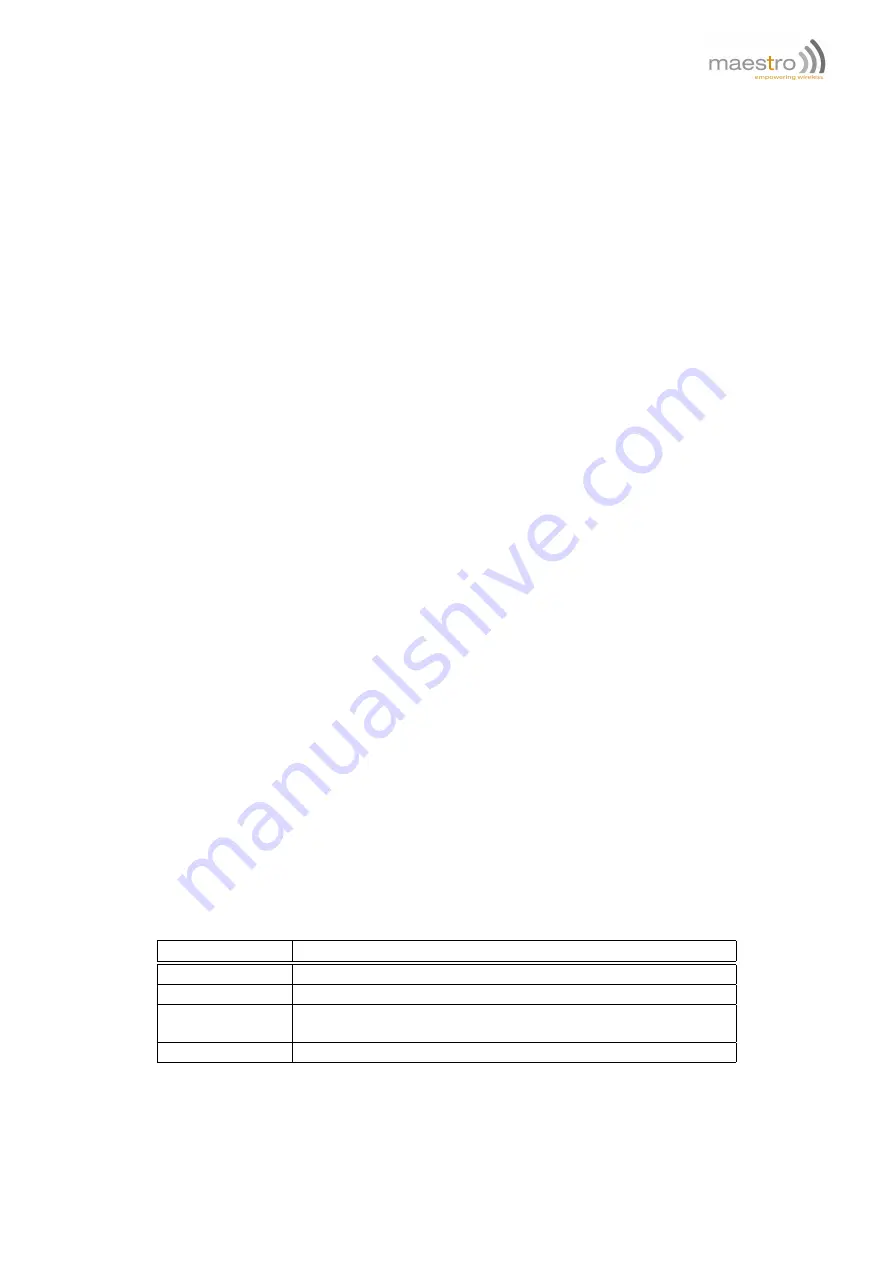
Chapter 4
AT command driven TCP/UDP connection
This feature let user to make a TCP or UDP connection upon the AT+OTCP or AT+OUDP command. This socket
connection feature does support DLE/ETX character coding. Only one of AT+OTCP or AT+OUDP connection can be
active at a time.
Make sure you have made the cellular connection by AT+IPCONNECT command before making socket connection
(see Chapter 25).
4.1
Closing connection command
AT+DLEMODE
When performing the AT command driven TCP or UDP socket connection, the attached host has the choice to code
or not the ETX character. When DLEMODE is set to 0, no specific process is needed on ETX character. Meaning
that it is not possible for a host to request an end of connection or to receive a clear indication of end of connection
from the TCP/IP stack.
When DLEMODE is set to 1, the ETX character is activated to request or indicate an end of connection. ETX
characters that belong to the payload data must be sent by the host on the serial port preceded by a DLE character.
Similarly ETX characters received by the TCP/IP stack from the Internet are sent to the host through the serial port
preceded by a DLE character.
"ETX" character is 0x03.
"DLE" character is 0x10.
Syntax:
AT+DLEMODE=<mode>
Response:
+DLEMODE: <mode>
Defined Values:
<mode>
1
enable DLEMODE.
0
disable DLEMODE (Default setting).
Example:
Command
Response
AT+DLEMODE=0
OK
AT+DLEMODE=1
OK
AT+DLEMODE?
+DLEMODE: 1
OK
AT+DLEMODE=?
+DLEMODE: (0-1)
Note:
–
DLEMODE is not available for automatic TCP/UDP connection.
Confidential, the whole document is the sole property of Maestro Wireless Solutions ltd.
support@maestro-wireless.com
33
















































